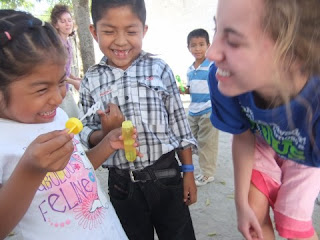Harry W. Kuse (1922 - 2012)
It's a Sunday evening. I have a new (to me) patient with cystic fibrosis on the floor. I was not supposed to work this evening, but whenever a cystic fibrosis comes in, plans change and I round on them daily. As I finished doing that (circa. 7:30 pm), I thought to go and see my patient and friend, Harry. Up until Friday, we had been trying to treat him and he was not responding. The plan was to transfer him to palliative care's service by Monday if he did not turn around. I looked up his name on the computer and found that he had already been transferred to their service. Things must have taken a turn for the worse, I thought. I walked down to the unit to see him and his family -- a doting daughter-in-law and son. The bed was wiped clean. Harry was dead. He died around 5:30 pm today.I first met Harry way back when I was still doing residency training. I still remember entering the exam room to find this pleasant elderly gentleman reading a western novel without any reading glasses. Through the years I came to know Harry well. He probably read every western novel he could get his hands on. Towards the end, the only westerns he could find that he had not read were western romances so he began reading those too.
Harry had become quite deaf but absolutely refused to wear hearing aids. We communicated with him by writing things on a whiteboard and he would reply back verbally. In the beginning, his daughter-in-law had to 'translate' everything he said to me because I could not make out the words in his near mumbling, rumbling voice. Towards the end however, I was surprised to realize one day that I no longer needed her help. I understood him well enough.
Harry was a tough old guy. He would flirt with the nurses and aids at the nursing home and hospital and had a great sense of humor. In the last 3 weeks he took a turn for the worse and began a slow decline that failed to change despite antibiotics, breathing treatments or whatever we did. We began to see this coming.
I remember walking away from the hospital last Sunday reflecting that for the first time, perhaps, I was losing my clinical objectivity with respect to a patient. I did NOT want him to die! I was not ready for comfort measures and found myself suggesting to his hospital doctors that we try this or that treatment. They looked at me sympathetically, but puzzled and a little dissappointed. I was supposed to be on their side in telling the family that it was time to let Harry go and I wasn't helping. It gave me pause. When does a patient become a family member or a close friend so much so that clinical objectivity is lost? Can I truly do right by my patient if I become emotional towards the inevitable decline?
On Friday, I saw Harry for the last time. He would open his eyes when I called his name but close them seconds later. I confessed my struggle with objectivity to the family with a trembling voice. However, I did put my heart aside for the moment and told them that I thought Harry had fought long and hard and his body was giving up. It was time to stop the treatments that weren't helping and keep him comfortable. They agreed. His daughter-in-law had in fact already begun to assemble photos of Harry in a slideshow and shared some of them with me. We all shed tears as we smiled at Harry's mischievious smile and twinkle in his eye as he rode his little tractor in their garden, as he played with grandkids, and wore a valentine heart on his last valentine day. I was paged out of the room and had to rush away. That was the last time I saw Harry.
They say you're not supposed to get attached to your patients. How is that possible after taking care of them for years and going through thick and thin, near misses with death and some emotionally charged painful experiences together? Sometimes all even a doctor can do is shed tears and bid farewell to a patient who becomes a friend.
Goodbye Harry! I will miss you! I still got your kids to take care of. Know that they are in loving hands.
























































